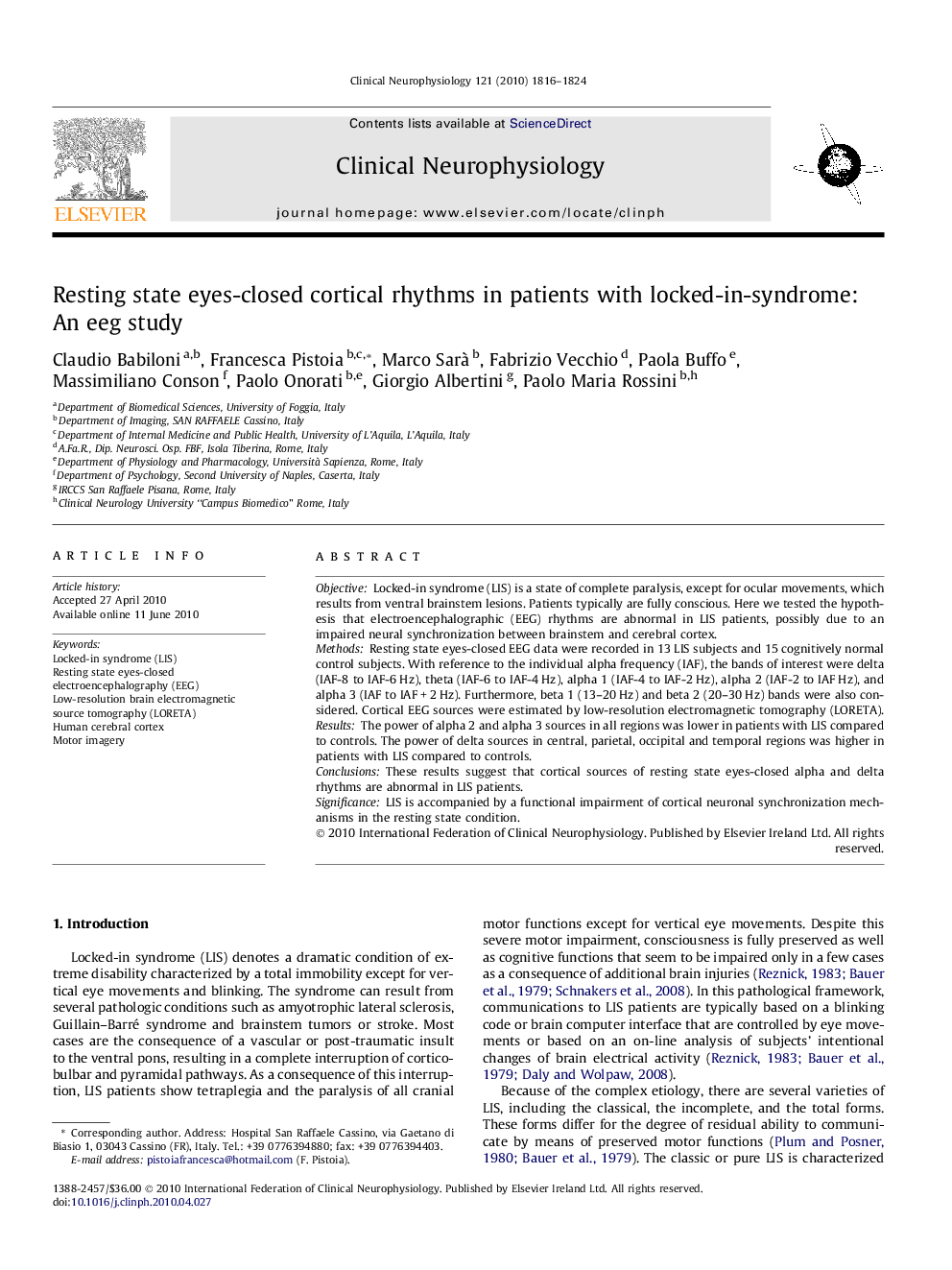| Article ID | Journal | Published Year | Pages | File Type |
|---|---|---|---|---|
| 3044639 | Clinical Neurophysiology | 2010 | 9 Pages |
ObjectiveLocked-in syndrome (LIS) is a state of complete paralysis, except for ocular movements, which results from ventral brainstem lesions. Patients typically are fully conscious. Here we tested the hypothesis that electroencephalographic (EEG) rhythms are abnormal in LIS patients, possibly due to an impaired neural synchronization between brainstem and cerebral cortex.MethodsResting state eyes-closed EEG data were recorded in 13 LIS subjects and 15 cognitively normal control subjects. With reference to the individual alpha frequency (IAF), the bands of interest were delta (IAF-8 to IAF-6 Hz), theta (IAF-6 to IAF-4 Hz), alpha 1 (IAF-4 to IAF-2 Hz), alpha 2 (IAF-2 to IAF Hz), and alpha 3 (IAF to IAF + 2 Hz). Furthermore, beta 1 (13–20 Hz) and beta 2 (20–30 Hz) bands were also considered. Cortical EEG sources were estimated by low-resolution electromagnetic tomography (LORETA).ResultsThe power of alpha 2 and alpha 3 sources in all regions was lower in patients with LIS compared to controls. The power of delta sources in central, parietal, occipital and temporal regions was higher in patients with LIS compared to controls.ConclusionsThese results suggest that cortical sources of resting state eyes-closed alpha and delta rhythms are abnormal in LIS patients.SignificanceLIS is accompanied by a functional impairment of cortical neuronal synchronization mechanisms in the resting state condition.
